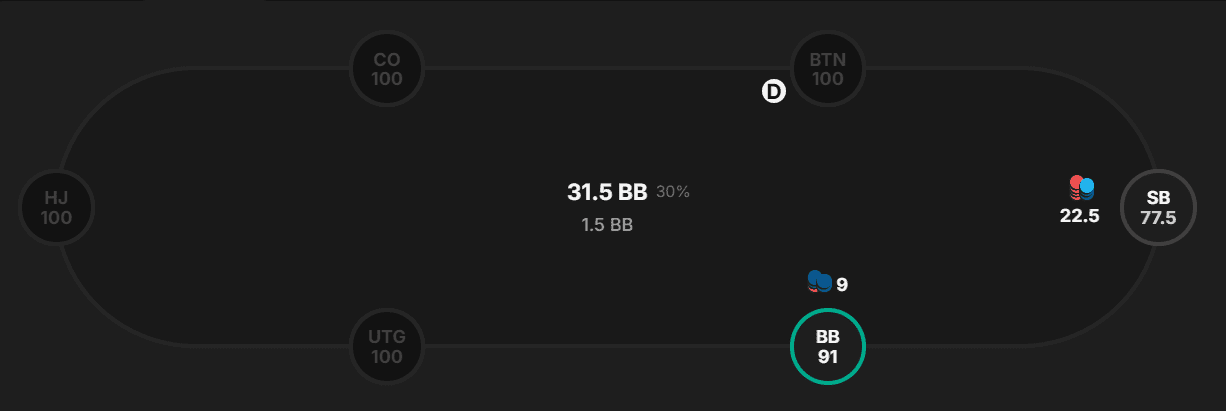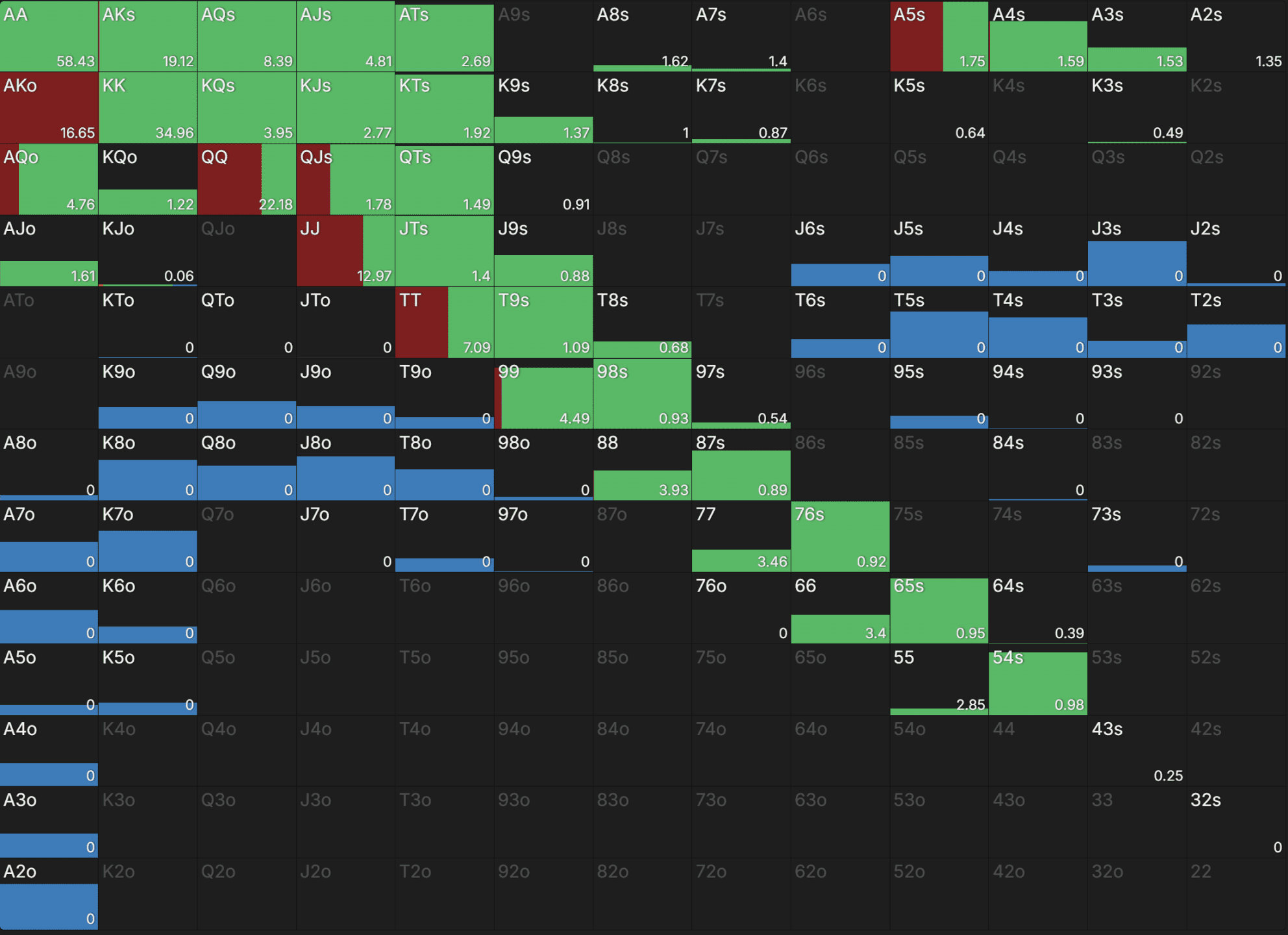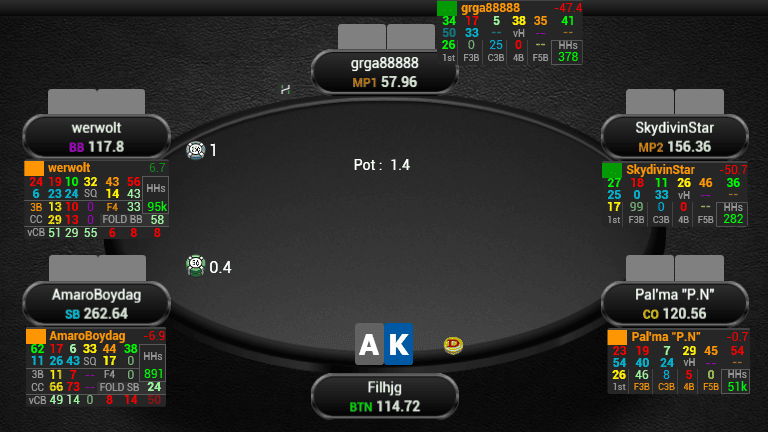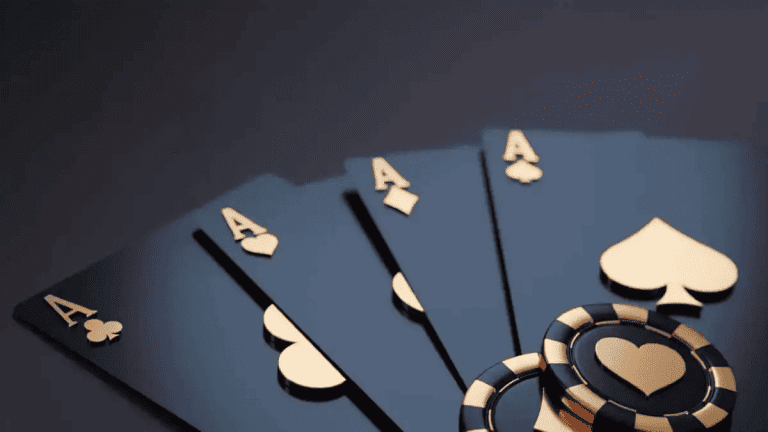The best feeling in No Limit Hold’em is to get dealt pocket AA. Your blood pressure rises, and you already imagine what you’d spend the buy-in you are about to win. What you don’t realize is that although you are a significant favourite in a preflop all-in situation, that spot is a rare guest. It would be best to learn how to play preflop and postflop correctly by understanding the concept of relative hand strength, and instead of focusing on your hand, think about range versus range. In this article, I’ll introduce a mistake that often ruins beginners’ EVs, and you should avoid committing it.
Slowplay preflop
One of the biggest mistakes beginners commit is to slowplay pocket aces. Let it be limping or only cold calling instead of 3-betting, it hurts those players’ EV with the aces.
The main reasoning is a very natural approach to hide the strength of our hand, „keep the recreational in”, etc. However, this thought process ignores the actual consequences of slow playing. As we discussed in the preflop articles, you should never limp (except from the SB on a low-rake environment and as a rare exploit in some spots against recreationals in the form of overlimping, but definitely not with aces). What happens if you want to hide your hand’s strength while the only hand you limp is aces? Your response might be that you’ll limp other hands, too, so as not to be noticeable. Do you remember we started the whole argument that you should never limp because it costs you significant EV? Refer to our preflop range articles 1 and 2 to refresh your knowledge.
Another argument for not slowplaying is if you compare the possibilities to piling all the money in by the river as a favourite. Examining against a random hand of a whole range (169 different combinations of starting hands), pocket AA has an 85% chance of winning preflop. This percentage will drastically sink when you are postflop, and community cards change the EQ distribution of players. The same decreasing EV is present in multiway pots, as well. Against two opponents, preflop, you’ll have around 78%; against three, only around 36%. And these ranges contain hands like J5o, 72o, etc. Imagine going against tighter, more reasonable ranges.
So when you miss the bet or raise preflop, your chances of winning decrease. However, that’s not the only disadvantage. At the same time, you fail to build the pot. When we discuss 100bb effective stack plays, the pot will increase exponentially by raising, 3-betting and 4-betting. At the same time, the stack-to-pot ratio will decrease exponentially postflop, which helps to go all-in in fewer streets, which a strong starting hand like Aces greatly benefits.
Compare the two situations; without community cards that could change equities, just focus on the favourable runout when your aces are good enough to valuebet on all streets.
- UTG opens for 2,2bb, and it’s folded to you on the BTN, with the pocket AA, and you decide to call, so do the Small Blind and the Big Blind. The pot is 8,8bb on the flop, and it’s checked to you. A very standard sizing is to bet 2/3-3/4 pot, so you decide to choose a large sizing (6,6bb) and only the UTG calls. The turn changes nothing; the pot is 22bb, and you go for the large sizing again (16,5bb). UTG calls again: the river is another brick, you have your three street value, the pot is 55bb, and you have a 72bb effective stack behind. How often do you think your opponent will call three streets with worst hands, especially calling a river overbet of 130%?
- UTG opens for 2,2bb, and it’s folded to you on the BTN, with the pocket AA, and you decide to 3-bet to 7,5bb. The blinds fold, and UTG calls. The pot is 15bb on the flop, and it’s checked to you. A very standard sizing is to bet 2/3-3/4 pot, so you choose a large sizing (11,2bb) and the UTG player calls. The turn changes nothing; the pot is 37,5bb, and you go for the large sizing again (28bb). UTG calls again; the river is another brick, you have your three street value, the pot is 93,75bb, and you have ~53bb effective stack behind. How often do you think your opponent will call three streets with worst hands when the stack-to-pot ratio is around 1/2? Compare the two outcomes and their likelihood and decide whether it is worth slow play.
| Street | Pot growth - slowplay | Pot growth - GTO | ||
| Bet size | Pot | Bet size | Pot | |
| Preflop | 2,5bb | 5,5bb | 10,5bb | 21,5bb |
| Flop | 3,6bb | 12,8bb | 14,2bb | 49,9bb |
| Turn | 8,4bb | 29,6bb | 32,9bb | 115,7bb |
| River | 19,6bb | 68,7bb | all-in ~42,4bb | 200bb |
Example without cold callers (HU pot) in a table – slowplay: BTN 2,5bb Open versus BB call, using 2/3 pots postflop GTO: BTN 2,5bb open versus BB 13bb 3-bet, using 2/3 pots postflop
Preflop charts versus exploitable players
Let’s discuss when you are up against regular players with notable mistakes in their preflop game. So the betsize adjustment is not applicable here, but there are cases when following your charts misleads you. Those charts are designed for situations where your opponents play their ranges correctly.
Let’s see a typical example of where you should differ from the theoretically optimal play. You play on a NL25 zoom table, it’s folded to the relatively tight SB who opens 3bb and you look down to pocket AA on the BB. You 3-bet to 9bb, and SB quickly 4-bet to 27bb. According to your chart, you should call with aces to protect the calling range against 4-bets, and the urgency in a low SPR is not high either, so you give the room for SB to bluff with hands that would have folded to a 5-bet all-in.
Now, let’s take a closer look at your opponent. We’ve just stated that she is relatively tight. Opening 35% from SB is at least 5-10% less than the preferred range. Moreover, she folds 72% of the time against 3-bets and only 4-betting 6% of the time. If you do the math quickly, it means she has a 4-betting range of roughly 2,1%. That range is exactly KK+, AKo and Aks. Why on earth would you want to call against this range? Your opponent is unlikely to fold any of these hands to a 5-bet; she is tight, so she might give up all bluffs with AK or in a messy runout, she might fold the KK at some point in the hand.
There are way too many opponents, like in this particular example. If you follow your charts, you commit huge mistakes by not stacking them immediately. Stop following preflop charts and understand how to exploit your opponents preflop!
Summary
The main takeaway from this first part is not to slowplay your aces preflop to keep in the recreational player, to disguise your hand strength or whatever false reason. The consequences are costly; your EQ share will be less in a multiway pot, while you face a high SPR against wide ranges. Aces will not benefit from any of these, on the contrary. You want to pile as much money as possible and fast as possible before you still find yourself in an unfavourable runout with a high SPR. Another important lesson is to be flexible with your game plan. Don’t stick to the preflop charts; if an exploit reveals itself, use it to your advantage!
Stay tuned for part 2. of this topic!



















0 comments